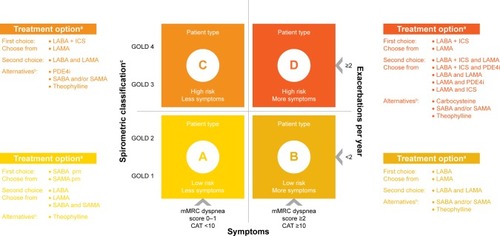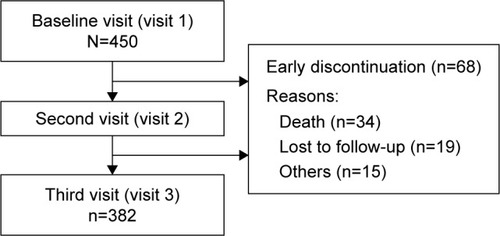Figures & data
Figure 1 COPD grouping and pharmacological management recommended by GOLD guideline 2011.
Abbreviations: CAT, COPD Assessment Test; FEV1, forced expiratory volume in 1 second; GOLD, Global Initiative for Chronic Obstructive Lung Disease; ICS, inhaled corticosteroids; LABA, long-acting β2-agonist; LAMA, long-acting muscarinic antagonist; mMRC, modified Medical Research Council; PDE4i, phosphodiesterase 4 inhibitors; prn, as needed (pro renata); SABA, short-acting β2-agonist; SAMA, short-acting muscarinic antagonist.

Table 1 Definition of overtreatment and undertreatment for different groups of COPD patients
Table 2 Baseline sociodemographics and clinical characteristics
Table 3 Use of pharmacological and nonpharmacological treatments by COPD grouping at different visits (by class of treatment)
Table 4 Reasons for change of pharmacological therapy
Table 5 Adherence rate to GOLD guideline 2011
Table 6 Adherence rate to GOLD guideline 2011 and exacerbation rate
Table 7 Summary of comorbidities by baseline COPD groupings

